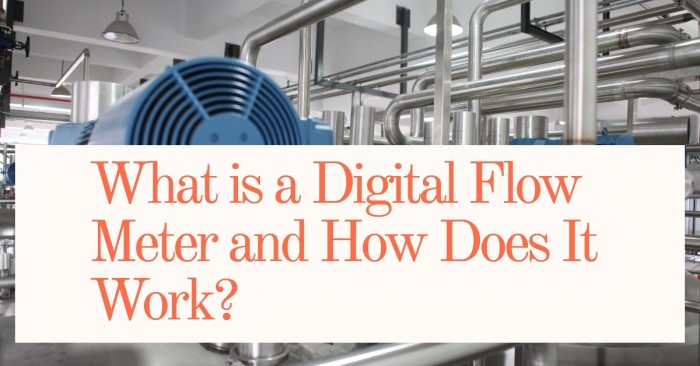
Various kinds of matter require special tools to measure them. You will require particular equipment to measure mass, length, or matter. Today we are going to look at a particular measurement device called a digital flow meter. These devices are used to measure the flow rate of various liquids depending on their application. We will get into how a digital flow meter works in a short while. First, let’s define what a flow meter is.
What is a Digital Liquid Flow Meter?
Digital flow meters have many names. They are also called flow sensors, flow-switches, or flow indicators. Digital flow meters are ideal tools for measuring any fluid’s flow pressure rate using a duct or a system loop. A water flow meter monitors the flow rate of any fluid continuously for a given period.
Although flow meters are also called flow switches, these devices only record data. There are other types of flow meters fitted with switches, allowing them to adjust the flow pressure and rate to optimum levels. In most cases, water flow switches can stop or start or trigger other components in a hydraulic system.
How a Digital Water Flow Meter Works
We can now move on to how a water flow system works since we have already defined it. We will explain how a digital water flow meter works better by mentioning various digital flow meter parts. Most of the flow meters available in the market today are made up of magnetic triggers or paddle. These components are found inside the primary device, which is connected to a circuit. The meter is then placed where the fluid passes to record measurement.
If a fluid passes through a pipe and a meter is connected in between, it will spin the paddle. The transducer then picks up signals sent from the paddle. The transducer’s work is to transform raw signals into a readable format. After that, the information gotten will pass through the transmitter, which will relay measurement based on set parameters.
The transmitter will take any action needed to adjust the device’s behavior. Once this happens, the flow meter will then report, monitor, or control specific parts of a liquid flow meter to provide the flow rate. To maintain the flow rate, flow meters also monitor the entire hydraulic system guided by the set parameters. If the flow goes way off the set parameters, an action or series of actions will be triggered. Some of these actions include alarm activation, powering the pump, diverting flow, or shutting down parts of a system.
The action taken by the flow meter will depend on the design and type of the flow meter. All flow meters are not fitted with a physical flow paddle. An ultrasonic digital water flow meter will bounce signals off when measuring fluid flow. These types of flow meters are non-intrusive versions.
Non-intrusive flow meters are commonly used in systems that deal with contaminated, physically damaging, or hazardous fluids. They are also ideal meters where moving parts are not exposed to wear and tear.
There is also another simple water measuring device that is made up of a tapered tube and afloat. This type of water flow meter is designed to measure, restrict, and free-flowing water. Since there are various types of water flow meters, their installation processes are also different.
Before buying a digital water flow meter, you first understand how to install it—as an operator, testing how a flow meter works after installation is also important to determine its accuracy. Testing will also allow you to know if you’ve set it to the right parameters.
Monitoring the flow meter while it’s working will tell you if it’s needed or not. When water stops flowing through the meter can also show you whether it’s working well or not. To know whether there is a complete circuit, an ohmmeter is used. It also measures the electrical components of a flow meter to check resistance.
This process is done when the liquid flow meter is activated. If the two steps don’t work, you will be forced to repair or replace the entire flow meter because it’s faulty. Flow meters used for public safety, like the fire station, should be tested regularly to ensure that they work effectively.
Conclusion
The effectiveness of a digital water flow meter is determined by the operator’s knowledge on which flow meter to use and how to use it in particular applications. The user also needs to ensure that the flow meter is installed correctly and tested before using it in production.
Author Bio:
Naman Modi is a Professional Blogger, SEO Expert & Guest blogger at proteusind.com. He is an Award-Winning Freelancer & Web Entrepreneur helping new entrepreneurs launch their first successful online business.
